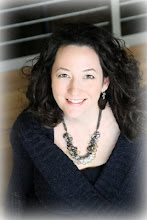Common QuestionsMary Radford, RN | April 15, 2011 at 5:43 pm | Categories: Common Questions | URL: http://wp.me/pMnJi-la |
Although I avoid the sun, I eat a well-balanced diet of mostly organic food. Does this meet my requirement of vitamin D?
Unfortunately it is not so easy to get your daily requirement from food. Vitamin D occurs naturally only in oily fish, liver, milk and egg yolks. To get the same vitamin D levels provided by the sun you’d need to drink 100 glasses of milk, eat more than four pounds of sardines, or 500 egg yolks a day, according to Michael E. Holick, MD, PhD, a vitamin researcher at Boston University.
Although our bodies synthesize UV rays to create vitamin D, we also realize that even incidental sun exposure damages and ages skin. As a sun-safe alternative, Rodan + Fields offers ESSENTIALS Maximum D3. This weekly dose of 10,000 IU of vitamin D is personally used and recommended by Dr. Rodan and Dr. Fields. Vitamin D3 is clinically proven to last approximately 3-10 times longer than vitamin D2. You’ll receive the equivalent of a day at the beach minus the damaging UV rays.
Are tanning beds safer than lying out in the sun? Don’t they increase vitamin D?
Don’t even consider getting into a tanning bed. True, beds have less UVB, reducing burning. But UVB wavelengths —not UVA—produce vitamin D in the skin. Artificial tanning lights emit UVA rays only, but you can’t escape UVA damage which can increase your chances of melanoma.
Although many believe that a tan is healthy, it is really one of the skin’s main defenses against too much sun. Darkened skin is a shield set up by the skin to help prevent the sun’s rays from causing damage to the underlying tissues. As the ultraviolet rays penetrate the skin, the dermis produces more melanin which is the pigment that deepens skin’s color. The melanin acts as a barrier to the ultraviolet radiation.

No comments:
Post a Comment